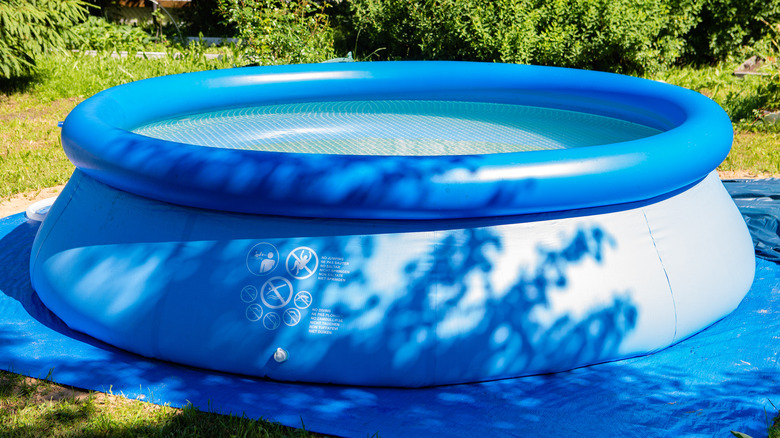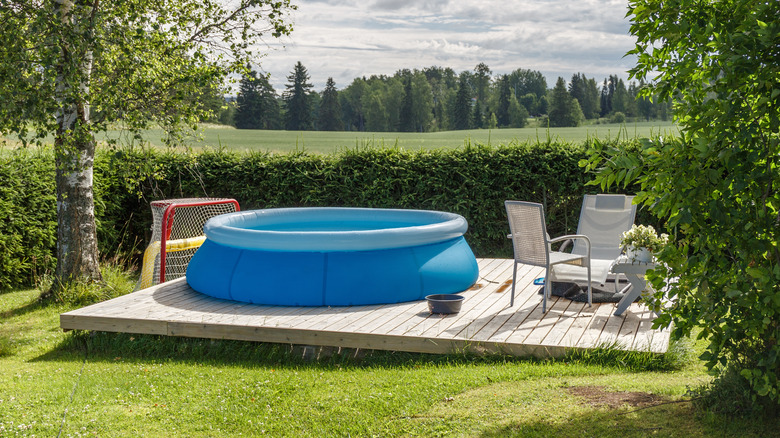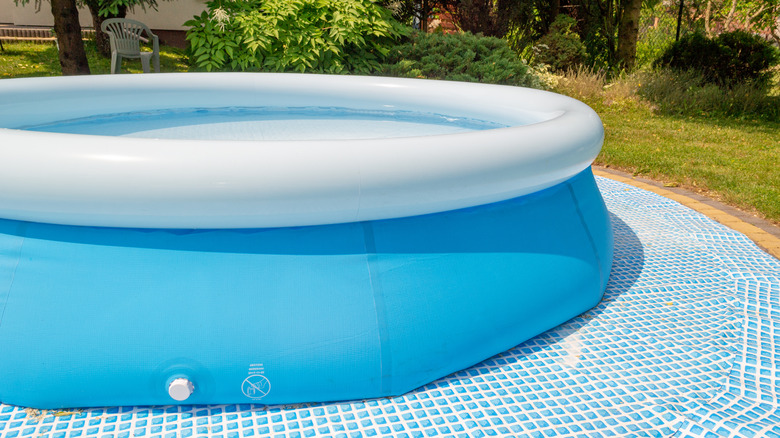Protect Your Grass By Placing These Items Underneath Your Inflatable Pool
When setting up an inflatable pool, it's a good idea to protect the grass underneath to prevent damage to the grass and your pool's material. By using the appropriate protective measures, you can ensure the longevity of both while also maintaining a safe and enjoyable environment for everyone using the pool. Some items you can place underneath your inflatable pool include tarps, ground cloths, mats, or a layer of fine sand or gravel. You can also use fake grass or turf for your pool area.
The first thing to do to protect the grass is to move the pool every day. When you empty it, move it around your lawn to prevent a specific patch of grass from getting worn out. Next, bring in your ground cover. Whichever material you choose needs to be strong and durable, breathable to prevent mold growth, easy to set up, and affordable so you can replace it easily.
Reasons not to put an inflatable pool directly on grass
Leaving an inflatable pool directly on grass for an extended period can cause damage to the grass beneath because of the weight of the pool and the occupants during use. Depending on the level of damage, this might require you to start over with your lawn, which will take a lot of time and resources. The grass itself can also pose a risk to the inflatable pool. Sharp objects like rocks or twigs on the ground can puncture the pool, causing leaks and rendering it unusable.
When setting up an inflatable pool, you need a flat, even surface so it's stable. A protective cover can make the ground more level, and placing a protective layer underneath also helps minimize the chances of accidents with those in the pool. Lastly, certain ground covers like tarps and cloths make it easier to clean up after use. They can hold any dirt or debris that may be produced while people use the pool, allowing for a quicker and simpler cleanup process.
Items to use under an inflatable pool
Ground cloths, tarps, and mats are common ground covers used with inflatable pools and can help protect your backyard grass. Ground cloths are easy to come by because they're typically included in an inflatable pool package, but they aren't the best in terms of quality. Tarps, meanwhile, are waterproof and vary in thickness, from lightweight to heavy-duty. For ground cover, you'll want to look for a thicker tarp that's durable (think of the tarps used to cover the infield grass during baseball rain delays). Tarps beneath pools should be fastened to the ground so they stay in place and should be considerably bigger than the pool so they cover the splash zone. As for mats, they can be used on top of tarps and the combination can make the bottom of the pool more comfortable.
Pool pads are another type of ground cover. Because they're specifically made for this purpose, they're a great option, but they're also more expensive when compared to other covers and will need to be taken care of so they last. Carpet pads are a more affordable alternative. They're versatile, but you'll need to stack several on top of each other to create a thick enough layer. Another approach is to create a layer of sand or gravel beneath the pool, which is more on the DIY side. Just note that these materials can easily be washed away and will need to settle after being poured before being used. Lastly, before laying any ground cover over grass, prepare the area by removing any sharp objects or trash.


